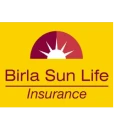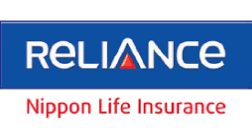Endowment policy
An endowment insurance plan is a savings oriented life insurance plan which helps in building up a secured financial corpus. The plan promises guaranteed benefits and pays either a death benefit or a maturity benefit.
Features of an endowment policy
There are some qualifying features of an endowment policy which are as follows:
- The policy is usually offered for long tenures going up as high as 30 years. In some endowment plans, lifelong coverage might also be available.
- The policies are issued either as participating policies or as non-participating policies. In participating plans, bonuses are declared while in non-participating plans bonuses are not declared.
- Guaranteed additions and loyalty additions might be added under some endowment plans.
- These plans pay the sum assured on death or maturity. Along with the sum assured, any type of additions which accrued during the term and any bonus added to the plan are also paid.
- Optional riders are also available under endowment plans.
- Loans are available under endowment plans wherein the policyholder can avail up to 90% of the surrender value as loan.
Why endowment policy is a good choice?
Endowment policies provide the following advantages which make them a good choice:
- The benefits provided under the plans are guaranteed. Thus, there is no risk in the returns promised by endowment plans. For risk-averse investors, endowment plans make a good choice.
- In participating endowment plans, bonus declarations enhance the benefits payable. This gives a good return to the policyholder. Even in case of non-participating plans, guaranteed or loyalty additions increase the benefits payable on death or maturity.
- The plan provides insurance coverage as well as creates a corpus for savings need of the policyholder.
- The premiums paid are allowed as a tax deduction under Section 80C while the benefits received are tax exempted under Section 10 (10D). Thus, endowment plans provide dual tax benefits not only on the investments but also on the returns generated from the plan.
- Loan facility allowed under the plan provides policyholders funds when it is needed.
Types of endowment policies
There is a range of endowment policies among which individuals can choose the one they desire. Below, we have listed 4 types of policies that come under the endowment plan.
- Full/With Profit Endowment Plan
Under this type of policy, the basic sum assured amount is given to the insured person. The sum is however equal to the death benefit. Right from the beginning of the policy stage/when the policy is purchased, the cover/amount is guaranteed. Under this policy, the insurer offers bonuses upon maturity/event of death. As a result, the final payout given to the insured individual becomes higher due to the additional bonuses. - Low-cost Endowment Plan
If you are a person that is looking toward saving funds for the future, a low-cost endowment policy is for you. These plans are ideally designed for individuals to save/gather funds for future purposes that need to be paid after a certain time period. Ideally, people opt for this plan because it helps in repaying mortgages, loans, etc. However, if the insured individual passes away during the policy tenure, the target amount is paid in the form of a minimum sum assured to the nominee. - Unit-Linked Endowment PlanUnit-Linked Endowment Plan is a fixed-term saving plan wherein someone can store their finances besides obtaining the benefits of life coverage. To be more precise, this type of endowment plan is best for people who hold a high-risk appetite. People who wish to acquire high returns on investment (ROI) can also opt for this plan. Herein, the premiums are bifurcated into several units under a certain investment scheme as selected by the insured person. Note that the ROI entirely depends on the performance of the funds in the market.
- Non-profit Endowment PlanThese plans provide a guaranteed return to the insured individual. Typically, the sum assured amount is given to the insured person. Upon maturity, it is paid as a maturity benefit, and at unusual events, the sum assured is paid to the nominee of the policy in the form of a death benefit.
Best endowment plans in India
Here are some of the best endowment plans available in the Indian insurance market currently:
| Plan name | Sum assured allowed | Salient features |
|---|---|---|
| Bajaj Allianz Life Super Life Assure | Rs.50, 000 onwards | Provides two coverage variantsThere are monthly incomes in one variant after the death of the insuredBonuses help increase the benefit payableOptional riders are available for enhancing the coverage |
| LIC’s New Jeevan Anand | Rs.1 lakh and above | At least 125% of the sum assured is paid as a death benefitBonuses are declared under the planAccidental benefit rider is availableAttractive premium discounts are also available |
| ICICI Pru Savings Suraksha | Rs.1.2 lakhs and above | Guaranteed additions and bonus are both added to the plan benefitsThe maturity benefit is guaranteedPolicy loans are available |
| HDFC Life Sampoorn Samridhi Plus Plan | Rs.65, 463 and above | Coverage is allowed up to 100 years of ageLimited premiums are requiredGuaranteed additions and bonus declarations help in boosting the plan benefitsAccidental rider benefit is inbuilt in the plan |
| HDFC Life Sanchay | Rs.100, 703 and above | Limited premium endowment planGuaranteed additions are promised during the term of the planGet 180% to 325% of the sum assured on maturity |
Who should buy an endowment policy?
Typically, endowment plans are a means of immense help for the dependents of the insured person at times of financial contingencies.
- Under expert advice, individuals who maintain/receive a regular stream or earnings should consider buying an endowment policy.
- Individuals who require lump sum amounts after a specific period can also think of purchasing an endowment plan.
- Salary individuals, small entrepreneurs, and professionals like doctors and lawyers should consider buying the endowment plan to meet all their long-term monetary goals.
- Endowment plans are best for individuals who don’t mind gaining low returns
- Risk-averse investors must try investing in endowment plans
- These plans are highly preferable and ideal for the common class people in place of people who belong to the super-rich class
- Any individual that does not wish to invest in a comprehensive life insurance policy can purchase an endowment policy. This is because it works as a saving instrument.
- People who wish to use funds as retirement security, or in the form of savings can purchase the plan to cater to all their future needs.
- To build a corpus to meet the investment objective for a long term.
Under what circumstances should one buy an endowment policy?
Every individual longs for a risk-free and guaranteed return investment. As we’ve discussed earlier, endowment plans should be purchased by individuals who,
- Wish to protect their family and dependents financially in their absence
- Aim to have goal-based savings
- Wish to build a corpus to cater to all their investments and for a long term
However, every element has a set of exceptions. Similarly, there are certain limitations to buying endowment plans that one should consider.
As it is known, endowment plans are regular premium plans. Hence, it should only be purchased when the insured individual is sure and confident about his/her steady flow of income. The aim here is to pay the premiums regularly without fail.
Because endowment policies are long-term, individuals can gain huge benefits. Bear in mind that, the longer the plan duration, the better the total benefit. Hence, individuals that have an irregular income should think twice before investing in endowment plans. Instead, they may take a single pay loan/flexi pay loan.
Endowment plans revolve around regularity and long-term. In a nutshell, it works better if these two factors are given proper attention.
Why should an individual buy an endowment policy?
Endowment plans are the perfect approach to save money/funds to fulfil all future financial requirements. However, in case the main wage-earner of the family meets a sudden demise, the additional benefit of the Life risk cover turns out to be of great help to the family. Although the returns here might be lower, they are usually risk-free. The best part is, individuals can also avail tax benefits under certain conditions.
There is a pool of reasons that state why endowment plans are highly preferred by risk-averse investors. Apart from covering the family’s monetary needs at unusual events, endowment plans offer the maturity amount to the insured individual in case he/she outlives the policy tenure.
What to see when buying an endowment policy?
In a nutshell, purchasing an endowment policy works better if you are looking forward to enjoying the twin benefits of insurance coverage and savings. Hence, while purchasing an endowment plan, make sure you keep the below-mentioned factors in mind.
- It’s never too early to invest
When you plan early, you get a wider space to invest. Over time, early planning helps you build a vast corpus. As a result, it offers disciplined savings and excellent returns because of the power of compounding. The good news is, when you invest at an early age, you get a variety of insurance coverage at an early date. - Go For A Plan that offer Riders
There is a range of insurance providers that offer additional benefits like education endowment, double endowment policy, marriage endowment policy, etc. The point is, to keep all these riders in mind while choosing your endowment policy. Several providers offer additional riders for surgical assistance and critical illnesses. However, note that these benefits can only be obtained at an extra cost. - Understand Endowment Policies and their kinds
Before investing in an endowment plan, it is imperative to look into the various policies that come under it. Moreover, it is vital to make the premium payment regularly. A piece of the premium amount is used to buy a life insurance scene whereas the rest of the amount gets invested in a profit/non-profit basis sort of plan. In the profit basis type, individuals take part in the profits of the company whereas, in the non-profit type, individuals participate in the non-profit of the firm. - Look Into The Flexibility Options
There are plenty of flexible options wherein you can select the best option for you. In case you are a salaried individual with a fixed income, you can easily purchase the regular endowment plan. However, if you have an irregular income, you can select from the flexible options that offer single/ flexi pay plans. Based on your flow of income, you may select the best suitable plan for you. - Look Into all the Insurer-related and Insured-related Factors
When you determine the benefits and features of diverse plans, ensure choosing an endowment plan that is easy to understand. Alongside, make a site to consider the rest of the factors including your income, needs, long-term objectives, age, present lifestyle, risk appetite, etc.
In addition, don’t forget to hold thorough research on the financial position of the insurer. Side by side, check the customer service record, premium rates of the plan, bonus rates, etc.
How does an endowment policy work?
At events when the insured individual meets a sudden demise right before the plan maturity, the nominee receives the fixed amount term in the form of sum assured. If the individual lives longer, he/she receives bonuses. In case the individual survives the policy term, he/she receives the maturity amount (Sum assured+Bonuses).
Claim process of endowment policy
Note that the beneficiary must update the insurer upon the death of the insured person. Consequently, when the insurer is informed about the loss, the claim process of the endowment policy begins. Subsequently, the insurer forwards a claim form to the nominee.
- First things first, the claim form must be filled out.
- The form must hold the signature of the beneficiary/assignee/nominee of the insured person / the legal heir to receive the death benefit
- A loss statement/death proof should be put forward by the last doctor who was treating the insured
- The hospital authorities must offer a certificate of wherein the insured was being treated
- Death certificate and the statement of witnesses during cremation is mandatory
- In case the insurance firm requires a discharge voucher, the nominee must provide it after filling the voucher
To make the claim process fast and effective, individuals can provide an additional form. Below are the details of the form that must be presented at the insurance office.
- A certified copy of the post mortem
- In case the insured individual’s demise was uncertain and unnatural, the nominee/ claimant should provide a Police investigation report along with the first information report (FIR)
- In case the insured was employed in an organisation, the e-certificate of the employer makes the job easy!
Endowment Vs Money Back Policies
Both endowment and money-back policies provide combined benefits of life insurance and savings. Alongside, both the policies are eligible for tax deductions as well. However, there are negligible differences that make both the policies dissimilar to each other in a few fields.
| Endowment Policies | Money-back Policies |
| Endowment policies pay investment benefits by the end of the policy tenure | Money-back policies overlap the investment benefit during the policy tenure at regular intervals. It breaks in the form of yearly bonuses. Upon maturity, it pays the total sum of bonuses |
| Endowment policies offer a higher rate of return | Money-back policies offer a lower rate of return |
Endowment Vs Term Insurance
The chief differences between Endowment plans and term insurance plans are:
| Endowment Plan | Term Insurance Plan |
| Endowment plans provide a fused benefit of savings and insurance coverage | A term Insurance policy is a complete life cover insurance plan. It deals in offering monetary/financial protection to the family of the insured person in the event of uncertainty/mishap. |
| With regards to term plans, endowment plans do not provide a high sum assured amount. The reason is simple. Endowment plans are savings cum insurance plans that promise maturity benefits | A term insurance policy provides a high sum assured amount. This is because it deals in offering risk cover only. |
| Typically, the premium rate of endowment plans is higher. This is because it puts forward a maturity benefit along with an extra loyalty bonus (if any) | Herein, the term insurance policy charges a lower premium rate. This is because it solely provides a death benefit to the beneficiary of the policy just in case any unfortunate event arises (death of the insured person ) |
| An endowment plan aims to make a lump sum payment to the beneficiary of the policy in the form of a death benefit. Alongside, it also makes a lump sum payment as a maturity benefit upon completion of the policy tenure. | Here, the beneficiary obtains the sum assured amount in the form of the death benefit at events of sudden demise or death of the insured individual during the policy tenure |
Endowment VS ULIPs
The major differences between Endowment and ULIPs are tabulated below for your reference:
| Endowment Plans | ULIP Plans |
| These work as insurance as well as savings plans | These work as insurance as well as investment plans |
| Endowment plans do not offer any transparency. This is because there is an absence of an investment portfolio | ULIP offers transparency. The insured individual can track the investment portfolio at ease |
| Later, the insured individual cannot make any amendments to the plan/policy | With ULIP plans, the individual can switch to a different fund throughout the investment policy. Simply put, there are no such restrictions |
| Endowment plan promises and renders guaranteed returns | The insured can acquire investment returns when the policy matures |
| Generally, the lock-in period of the endowment plan is 2-3 years. It entirely hangs on the premium payment tenure and the plan/policy. | The lock-in period of the ULIP plan is 5 years |
| Upon maturity, the insured individual will acquire the entire sum assured amount along with the bonus (if any) | Upon maturity, the returns on ULIPs depend on the performance of funds with regards to the market |
List of documents required for purchasing an endowment plan
Listed below are the details of documents that an insured person requires for purchasing/applying for an endowment plan
- Document of age proof
- Address proof or residential proof
- Photographs
- Complete application form/proposal filled with all the mandatory details
What happens when an endowment policy matures?
In the event when a particular insured individual endures the endowment policy term following its maturity, he/she receives a lump sum amount in the form of a maturity bonus.
Taxability of endowment plans
Moving forward, what else can be better than a policy that plays the role of savings and tax Exemption tool simultaneously? Typically, endowment plans always accompany tax benefits with it. This is because the chief plan benefit and the payable premiums are eligible for tax exemption. Under Section 80C and 10(10D) of the Income Tax Act, 1961, the insured can obtain a tax exemption on maturity amount and premium payment to an extent.






















